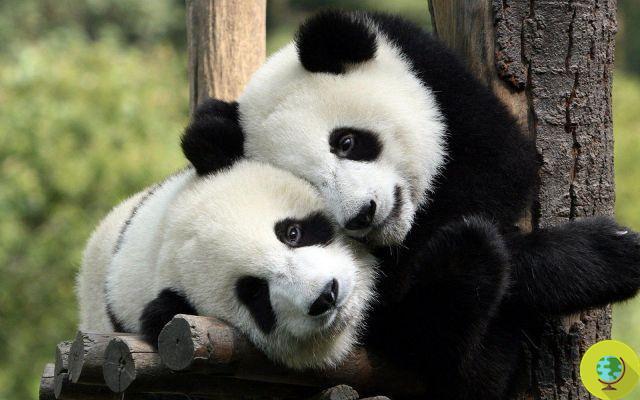
Tigers, pandas and rhinos and 440 other species could be completely extinct by 2050
He is about to end up run over, his mother saves him
Biodiversity e climate changes: tigers, panda e rhinos and other 440 species by 2050 they could be completely extinct. In practice, one in four species of carnivores and ungulates is likely to no longer exist in a few years. The cause, needless to say, is to be found in the current socio-economic development model it is based on high rates of deforestation and CO2 emissions.
It is what comes out of a new one study conducted by 10 institutions, including the Sapienza University of Rome, the International Union for the Conservation of Nature (IUCN) and BirdLife International, published in the Conservation Letters journal.
In practice, as things stand, all those species of animals, to which are added those already threatened today, they have no chance of improving their conservation status if we continue with these nefarious global "development" policies.
"Today's growing global demand for food, water and energy is met by increasing agricultural productivity and the use of fossil fuels and other resources", says co-author Thomas Brooks, of the Head of Science and Knowledge, a unit of the IUCN. "This has a high environmental cost" which does not benefit animals in any way.
THE ALTERNATIVE
"The document demonstrates for the first time that human development objectives and biodiversity conservation do not need to compete", explains Piero Visconti, affiliate researcher at the Global Mammal Assessment laboratory of the Charles Darwin Department of Biology and Biotechnology at Sapienza and at the Microsoft Research Center in Cambridge. "We have discovered that an alternative scenario exists and is capable of eradicating hunger and poverty and improving human well-being in general, while achieving an improvement in the conservation status of biodiversity".
A kind of "Consumption Change", A scenario in which access to food, energy and water resources by the poorest sections of the human population will increase until it reaches"Millennium Development Goals" of the United Nations. At the same time, per capita consumption and emissions by developed countries will be reduced with a lower production of post-productive agricultural waste and with the adoption of a healthier diet (with less meat consumption!), As recommended. from Harvard Medical School of Public Health.
"This is the first time that it is shown that individual actions to achieve a more sustainable lifestyle, such as reduced meat consumption, can collectively have a huge impact on the world's biodiversity," he says. Carlo Rondinini, coordinator of the Global Mammal Assessment laboratory.
The study highlights how the growing demand for agricultural products can only be satisfied thanks tomore efficient use of current production capacity. The path of socio-political change of this scenario was designed by starting from a series of objectives to be achieved by 2050 and 2020 and projecting, up to the present day, the levels of consumption of resources necessary to achieve the final goals. A technique that bears the name of "back-casting”And that, probably, will avert the future risk of extinction of an entire group of animal species.
Germana Carillo
READ also:
8 ugly endangered animals
10 animal species at risk of extinction


























